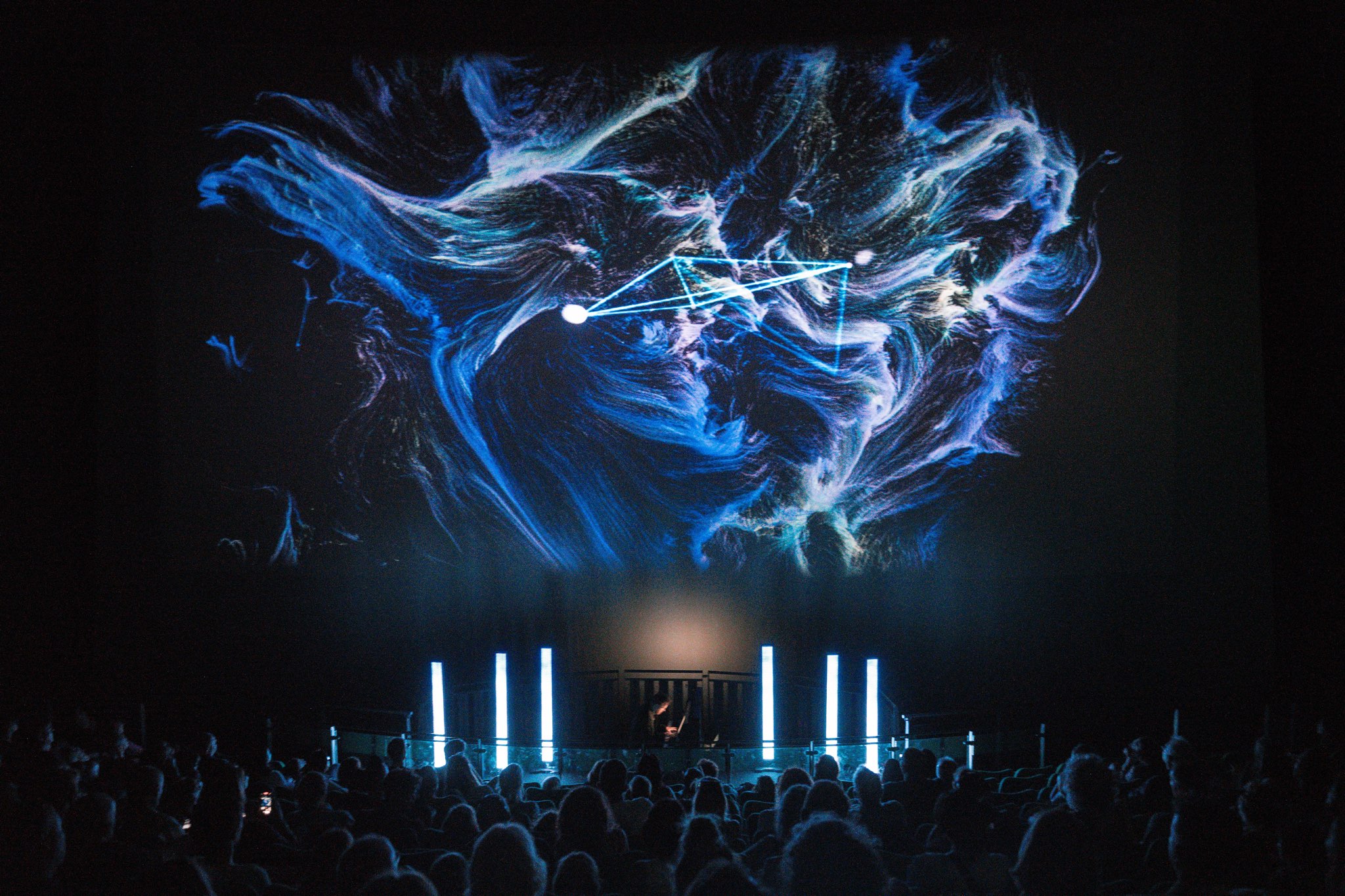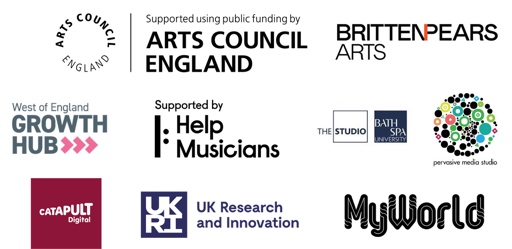
ABOUT
Composer and pianist Charlie Hooper-Williams performs “beautiful” (Times Radio), “soulful, richly layered” (Nick Smithson) music which is “masterfully understated and laced with a magnetic sense of melody” (Archodia).
A prizewinning former concert pianist, he combines intricate, virtuosic textures with soaring, stirring melodies. Originally from the pine woods of Minnesota’s Iron Range, he grew up near Chicago, studied at the University of Cambridge Centre for Music and Science, and now makes his home in Bath.
Hooper-Williams adds to the piano a set of custom-built machines which create new sounds: his “harmonics machine”, and “infinite resonator” shape the instrument’s traditional sound into something new, beautiful and exciting.
In his youth as a classical pianist, Hooper-Williams was a prizewinner at the International Shostakovich Piano Competition. Upon leaving that rarified world he toured with several bands, performing from SXSW and CMJ festivals to London’s Cafe Oto, and collaborated with multi-Grammy-winning ensemble eighth blackbird. He has performed works by Rzewski and Corigliano, including city-level premieres. He briefly stepped into the tech industry to help develop the app Shazam, after which he returned to music, now composing his own works.
Don’t miss the chance to experience Charlie Hooper-Williams’s unique blend of music and technology in his upcoming performances .
“Lovely… really special, immersive show”
“Music to soothe the soul… He’s fantastic”
“A wonderful new album”
“Unmissable… a must-see show”
“A new exciting voice on the contemporary scene”
“Complete genius and sonic exquisiteness… wonderful”
“Masterfully understated and laced with a magnetic sense of melody”
Read more: Ben Eshmade reflects on Charlie Hooper-Williams’ history, origin and musical language
Charlie Hooper-Williams ponders and plunders the potential of music through a future-system of his own devising; storytelling in both sound and vision. From the piano this digital dreamer takes on a multitude of adventures, leading you down the twists and turns of different vistas, staring upwards at a starry sky, a kaleidoscope of shifting shapes or a labyrinth of pathways.
With each movement of fingers, every note on the piano is given to a purpose-built system, a computer interface named Otto. This real time collaborator and translator takes the notes and the data, turning and twisting melody into structure. Through algorithms, through imagination, Hooper-Williams and Otto work in tandem together inviting you to a communal cinematic experience.
The concert (or theatrical experience) to which Hooper-Williams invites us could be thought of as a series of questions or paradigms. For instance, can you keep one move ahead and predict the destination of music as it unfolds on the screen? Are you able to hear shapes, patterns, or projected words in your head? Can a two-hundred-year-old machine and instrument made up of strings and hammers be something more?
Whether it be the aforementioned Otto or his ‘harmonics machine’ (a device which translates simple piano notes to otherworldly sounds), Hooper-Williams’ approach to music, art and poetry seems very much of the ‘now’. But it’s a lifetime of experience, exploration, reading, watching, and learning that have led him to present his most personal, personable, post-classical music to date.
Where did his relationship with technology, sound and sensory experience begin? Well, let’s go back: a child on the carpet soaking up every detail and vibration of the family’s stereo. Later a more portable tape recorder allowed him to capture the sound and signal from the radio station, freezing a fleeting moment, sampling this rare musical mineral.
His parents brought a piano into the house and into his life, once again connecting with his inquisitive side: he wanted or needed to understand how the sound was created, where it came from, where it went– the mechanics how the dynamic pressure of a finger or various fingers on his hand led to the striking sustained sound he heard and enjoyed.
You could say this musical journey was also mirrored by his own winding path in life. He was led from study in Los Angeles and Chicago to another side of the globe. Eventually settling into a pastoral existence in the Southwest of England – soaking up influences as went, whether that be the noise of the city or the silence of suburbia.
Charlie Hooper-Williams has never stopped bending, looking inside, and tinkering with the piano, but while studying in the States, he realised that hours of practise didn’t necessarily unlock the potential of the instrument. For that he had to return to a different language he had first encountered in middle school. MIDI was a way of moving from analogue to digital, a keyboard performed by the operator or musician captured the instructions on the identity, timing, duration and volume of the notes performed.
Music, then, was no longer just notation— dots on manuscript paper— a shift has begun and he started to see and hear the potential of building a digital language that allowed the freedom to manipulate, extrapolate and find a way of setting free the music.
The music itself is made up of songs without words, but that doesn’t mean that they lack moments of meaning. They are filled with diary-like reminiscences: a remembrance of a space or feeling such as a Chicago cocktail bar, a Berlin shack or even a monastery.
It looks outwards to the cold glacial mystery of space or looks below to Ernst Haeckel’s drawings of microscopic ocean life. It contains personal reflection whether that be piano notes borrowed from a loved one (elaborate and extended) or just the thoughts and feelings on embarking on fatherhood.
We return to the unanswered question which lies beneath this project of whether representing music visually can affect how you feel the music in your head and heart? The human touch is perhaps the last thing you’d expect from a technology-driven approach, coding, and algorithms, but it is hard not to get drawn into this charming style of writing and dreaming aloud.
Hooper-Williams likes to collaborate when he finds those who have a similar outlook in life and art. Though he is never far from challenging perceptions and norms, creating a collaboration, a collage of words and poetry with Artificial Intelligence in his current set list.
Should you have the chance to meet and spend time with Hooper-Williams and Otto, it is not something you will regret doing. Sit back and watch them build something together in person— a combination of piano, effect pedals, digital processing power. It’s a new way of taking a small music idea and blowing it up large and in many different forms on the screen, a new form of storytelling to which you are invited.
FREQUENTLY ASKED QUESTIONS
Q. Why do you perform with visuals? What’s their function?
The visuals allow someone hearing the music for the first time to have the experience of already knowing the piece. For example, where are the section changes? Which bits are thematically important? How close to the end are we? What kind of a piece is this?
Q. Which comes first, the music or the visuals? Or do they come together?
Fundamentally, I am a musician first and foremost. So generally I have a musical idea, and then think about how visuals could support it. As my visuals explorations have matured, I have started to have visual ideas that don’t yet have a musical counterpart. I am always thinking about what music could be well-supported by those visuals and I’m sure that we’ll start to see pieces inspired by visual explorations in the coming months.
Q. What is Postclassical?
Postclassical music draws inspiration from classical music, but with a touch of irreverence that lets us make it exciting and new. It also incorporates elements of pop, electronic, film and other musical traditions. It uses instruments from the classical tradition— very often piano and strings— alongside newer instruments like synths, loops, and computer processing. It borrows from the structures and idioms of other genres: ‘pop’, electronica, and folk, as well as the classical ‘minimalist’ movement.
In addition it embraces the recording and production of music as part of the creative process, so you often get these heightened, almost surreal sonic landscapes we’re all used to hearing in popular music. This contrasts with classical recordings, which attempt to essentially capture the experience of being in a concert hall listening to the performance.
I like to mention this key detail about postclassical versus classical recordings as a way of highlighting their differences in philosophy: In a classical recording, you’re in the audience. In a postclassical recording, you’re sitting at the piano— sometimes it even sounds like you’re inside the piano! So there’s this sense of inclusiveness and intimacy that’s really important to the genre as a whole.
This extends beyond recording techniques, I believe, to the writing of the music as well. The music itself is written to be inclusive; you don’t need to know about music history or theory in order to enjoy it.
Q. What does it mean to be post-something? (Post-modern, for example)
It essentially means that it’s been digested: the culture has “digested” the ideas of the movement, so to speak. To continue the metaphor, its “nutrients” are now available for use by the culture at large— anyone who feels moved by the classical idiom can pick and choose their favourite bits or tricks or instrumentations or content or form and make something new with it.
Q. Is this the same as neoclassical? Indie classical?
I’m not the arbiter of any of these terms, but as far as I see it: yes. Strictly speaking it’s kind of weird that “post” and “neo” could mean the same thing, but here we are. “Indie classical” as a term is apparently outre these days, but it is pointing to the same thing, I believe.
Q. Why try to define it, anyway?
Community. There are so many people making amazing music in this genre, but it hasn’t yet crystallised into a self-aware ‘scene’. There are some core concert series around the UK that are anchors for artists of this genre to gather around: Brudenell Piano Sessions in Leeds, Hidden Notes in Stroud, and Daylight Music, Counter Chamber and Nonclassical in London. And the people running these things tend to be just super nice and generous and just excited about what we’re all doing. The more we can support this community and help great artists get heard, the better; having a thing to call it helps give us something to rally around.
